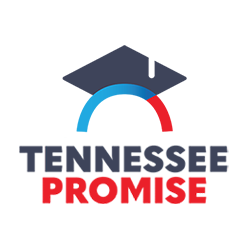As an institution of higher education, Volunteer State Community College (VSCC) is responsible for determining and upholding standards related to awarding credit hours for student work consistent with national standards. The credit hour allows the College to quantify academic activity for purposes of awarding academic credentials and determining federal funding, including institutional eligibility, program eligibility, and student enrollment status and eligibility. This policy is intended to help ensure academic rigor and satisfy both Federal and SACSCOC compliance requirements to: (a) institutionally define a credit hour, (b) provide a rationale for allocating credit hours by course type, and (c) provide a reasonable approximation of the minimum amount of student work expected in accordance with commonly accepted practices in higher education. This policy applies to all courses that award credit regardless of delivery mode and provides general guidelines for faculty and administrators regarding the minimum number of hours required per credit hour.
Definitions
Contact Hour: The measure of scheduled instruction time given to students. Contact hours are dependent on the course’s instructional format and are calculated on a per-week basis for 15-week terms.
Credit Hour: In accordance with federal regulations (34 CPR Part 600.2), VSCC defines a credit hour as the minimum amount of work represented in intended learning outcomes and verified by evidence of student achievement that is an institutionally established equivalency that approximates:
- Not less than one hour of classroom or direct faculty instruction and a minimum of two hours out of class student work each week for approximately fifteen weeks for one semester or trimester hour of credit, or ten to twelve weeks for one-quarter hour of credit, or the equivalent amount of work over a different amount of time, or
- At least an equivalent amount of work as required outlined in item 1 above for other academic activities as established by the institution including laboratory work, internships, practical, studio work, clinical work, and other academic work leading to the award of credit hours.
Delivery Mode: Delivery mode is how educational content is conveyed from faculty to students. Primary delivery modes include: (a) lecture; (b) laboratory, seminar, or studio; (c) clinical; (d) practicum or internship; and (e) private lessons or independent study. Delivery modes are defined as follows:
- Lecture: A formalized instruction in which the instructor provides an educational experience to students, applying any combination of instructional methods.
- Laboratory: An educational activity where students conduct experiments, perfect skills, practice procedures, or complete simulation experiences under the direction of a faculty member.
- Seminar: A less formal educational experience than a lecture, in which a small number of students engage in discussions directed by a faculty member.
- Studio: A supervised creative and/or artistic endeavors experience incorporating practical experiences and individualized instruction.
- Clinical: A career-based experience, typically in medical or healthcare fields, where students meet to test, observe, experiment, or practice a profession in a hands-on environment. Clinical contact hours vary based on the amount of time it takes to expose a student to the competencies and skills required for the clinical experience.
- Practicum: A practicum is a supervised on-the-job experience in a pre-approved setting where the primary task of the student is observation and documentation. The student also participates in a concurrent course that outlines the goals and expectations of the on-the-job experience.
- Internship: An internship provides the student with hands-on job experience. The student relates the internship experience to the knowledge that he or she gained through classroom instruction.
- Private Lesson: A private lesson is one-on-one music instruction where students perform and are critiqued by the instructor and practice outside the lesson and studio session.
- Independent Study: An independent study is a self-directed approach to the acquisition of knowledge where a student plans and carries out learning activities on his/her own under the direction of a faculty member.
Credit Hour Assignment
As a basic unit of student Federal aid eligibility, credit hour allocations must accurately represent the level of instruction, academic rigor, and time requirements for a course taken at an institution. Credit hours are frequently viewed as a proxy for the amount of student learning that has taken place and are also used to define the length of a program of study. The responsibility for assuring that the academic credit awarded for organized student learning (course, seminar, lab, etc.) rests upon the expertise and authority of the faculty within the relevant discipline. All academic units are responsible for ensuring that academic credit is awarded only for work that meets the requirements outlined in this policy.
The basis for assigning credit hours must be documented for all courses. Faculty are responsible for establishing a mechanism for reviewing the basis for assigning credits to new or modified courses offered by the College. The College’s Curriculum Committee has the responsibility of verifying the assignment of credit. The determination of credit hours is made when a course is initially developed and whenever a revision to an existing course is taken through the curriculum review process. A record of this determination is maintained by the Office of Academic Affairs and published in the College catalog.
Guidelines for Assigning Credit:
- Guidelines for the assignment of credit hours are based upon the combination of instructional contact hours and student academic work completed outside the classroom and are provided to assist faculty in assuring equivalency of course credits across the College. One semester credit hour in lecture format equals 15 hours of direct instruction and 30 hours of out-of-class student work in a single term.
- All courses will be developed to be equivalent to a 15-week semester even if the course is taught in an alternative or accelerated format.
- All courses offered through distance learning must follow this policy.
- Minimum Instructional Times Per Course Per Term:
| Course Type | Credits Awarded | Minimum Time Allocations in Hours* | |||
| Weekly Direct Instruction | Term Direct Instruction | Term Out-of- Class Student Work | Total Term Instructional and Student Work Out- of-Class | ||
| Lecture | 1 | 1 | 15 | 30 | 45 |
| 3 | 3 | 45 | 90 | 135 | |
| Laboratory, Seminar, Studio | 1 (2:1) | 2 | 30 | 15 | 45 |
| 1 (3:1) | 3 | 45 | 0 | 45 | |
| Practicum, Internship, Private Lesson, Independent Study | 1 | 1.5 | 22.5 | 22.5 | 45 |
| 3 | 4.5 | 67.5 | 67.5 | 135 | |
| Clinical | Credit and contact hours vary depending on the requirements for the clinical experience, but the minimum standard of 45 contact hours per semester credit hour applies to clinical courses. | ||||
*50 minutes of direct instruction time with a 10-minute break is equivalent to 1 hour.
SACSCOC Source: Approved: Board of Trustees, June 2011, Edited: January 2012, Edited for the 2018 Edition of the Principles of Accreditation: August 2018
VSCC Source: March 8, 2023, President’s Cabinet



